当前位置:网站首页>Data visualization chart summary (II)
Data visualization chart summary (II)
2022-07-05 06:02:00 【Begin to change】
Catalog
seventeen 、 Non ribbon dazzling pictures
Twenty-nine 、 Word cloud picture
One 、 Thermogram
Thermogram (Heatmap) Display data by changing colors , When applied to tables , Thermograms are suitable for cross checking multivariable data .
Heat maps are used to show differences between multiple variables ; Show any of the modes ; Shows whether there are variables similar to each other ; And detecting whether there is any correlation between them .
Because heat maps depend on color to express numerical values , It is more suitable for displaying a wide range of numerical data , Because it's always difficult to pinpoint the differences between colors , It is also difficult to extract specific data points from it ( Unless you add raw data to the cell ).
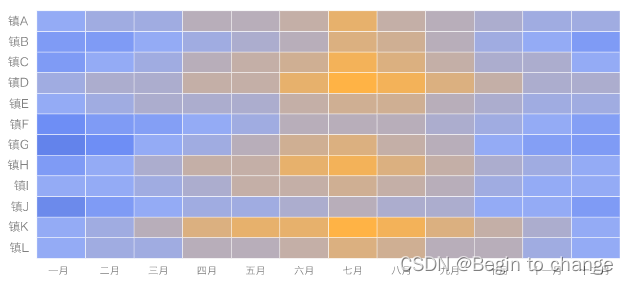
Two 、 Scatter plot
Scatter plot (Scatterplot) Also known as 「 Point graph 」、「 Scatter map 」 or 「X-Y Point graph 」, Used to display the values of two variables ( Each axis shows a variable ), And detect whether the relationship or correlation between the two variables exists .
A straight line or curve can be added to the chart to aid analysis , And show what it looks like when all the data points are condensed into a single line , Often referred to as 「 Best fit line 」 or 「 Trend line 」.
If you have a pair of numerical data , You can use a scatter plot to see if one of the variables is affecting the other . But remember , Correlation is not causality , There may also be another variable that affects the result .
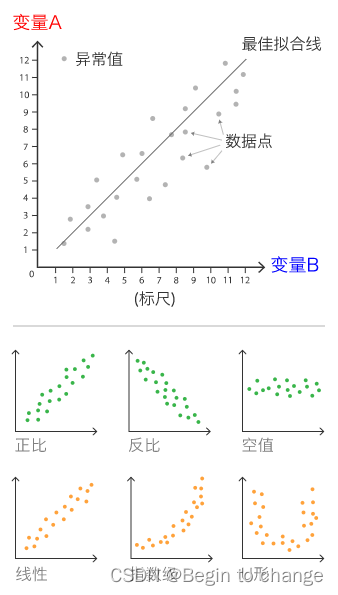
3、 ... and 、 Bubble chart
A bubble chart is a chart that contains multiple variables , A combination of scatter plot and scale area plot , The size of the circle needs to be drawn according to the area of the circle , Not its radius or diameter .
By using location and scale , Bubble charts are usually used to compare and display marked / The relationship between sorted circles .
But , Too many bubbles can make the chart hard to read , But we can solve this problem by adding interactivity to the diagram ( Click or hover over the bubble to show hidden information ), You can also choose to reorganize or filter grouping categories .
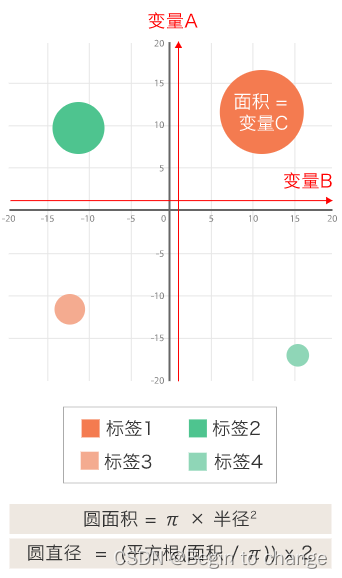
Four 、 Bubble map
In this kind of data map , A circular pattern will appear above the specified geographic area , The area of the circle is proportional to its value in the dataset .
Bubble maps are suitable for comparing the proportions between different geographic regions , It's not affected by the size of the area . But the main drawback of bubble maps is : Too large bubbles may overlap with other bubbles or areas on the map .

5、 ... and 、 Regional map
Area maps are usually used to show the relationship between different areas and data variables , And the numerical changes or patterns of the displayed position are visualized
We represent data variables in different shades of color in each area of the map , For example, from one color to another 、 Monochrome graduals 、 From transparent to opaque 、 From light to dark , Even the whole spectrum .
But the disadvantage is that it is unable to accurately read or compare the values in the map . Besides , Larger areas are more visible than small areas , Affect the reader's perception of numerical values .
Common mistakes in mapping areas : The original value is the same as the original data ( For example, population ) Carry out operations , Instead of using normalized values ( example : Calculate the population per square kilometer ).
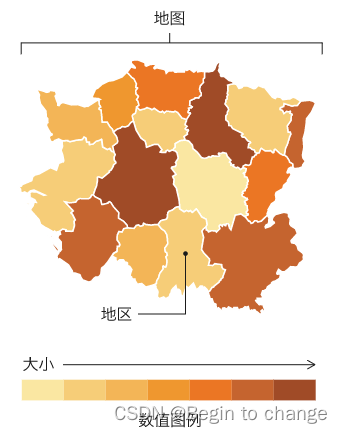
6、 ... and 、 Point map
Point map (Dot Map) Also known as 「 Point to point distribution 」 or 「 Dot plot density map 」. Place dots of equal size on a geographic area , It aims to detect the spatial layout or data distribution in the region .
There are two kinds of point map : one-on-one ( Each point represents a single count or an object ) And one to many ( Each dot represents a specific unit , for example 1 spot = 10 tree ).
Point map is very suitable for viewing the distribution and pattern of objects in a certain area , And it's easy to master , Can provide data overview .
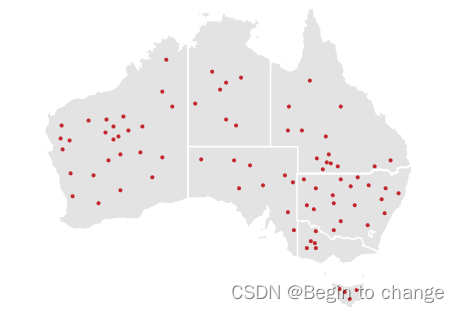
7、 ... and 、 Link map
Link map (Connection Map) It is a chart that connects different places on a map with straight lines or curves .
Connectivity maps are great for showing geographic connections and relationships , We can also show the spatial pattern by studying the connection distribution or concentration degree on the connection map .
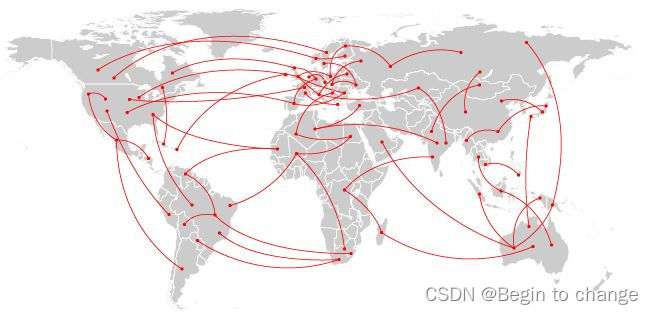
8、 ... and 、 Flow map
Flow map (Flow Map) Show the movement of information or objects from one location to another and the number of them on a map , It's usually used to show people 、 Migration data for animals and products .
The scale or amount of movement represented by a single flow line is represented by its coarseness , It helps to show the geographic distribution of migration activities .
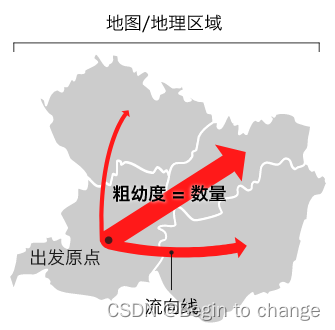
Nine 、 Gantt Chart
Gantt Chart (Gantt Chart) Often used as an organizational tool for project management , Show activity ( Or task ) List and duration , It also shows when each activity starts and ends .
Gantt chart is suitable for planning and estimating the time required for the whole project , It can also show overlapping activities .
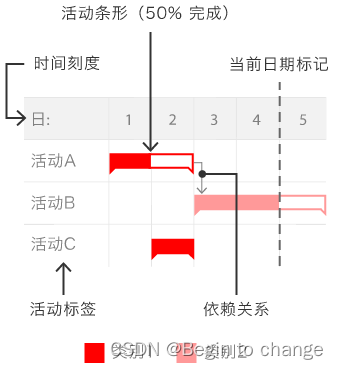
Ten 、 Box figure
The box diagram is also called 「 Box picture 」 or 「 boxplot 」, It can display the quartile of digital data group conveniently , It can appear vertically or horizontally .
The lines extending from both ends of the box are called 「 whisker 」(whiskers), It's used to show up 、 Variables other than the lower quartile . outliers (Outliers) Sometimes it is represented by a single data point at the same level as the whisker
Box charts are usually used for descriptive statistics , It's a great way to quickly view one or more datasets graphically .
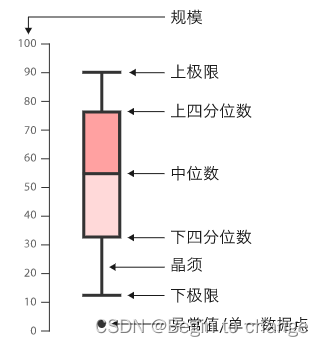
11、 ... and 、 Bullet diagram
Bullet diagram (Bullet Graph) It's similar to a bar chart , But add more visual elements , Provide more supplementary information .
The bullet diagram was originally made by Stephen Few Development , It is used to replace graphic instruments such as odometer or speedometer on the dashboard , Solve the problem of insufficient display information , And it can effectively save space , It can also remove some unnecessary things from the instrument panel .
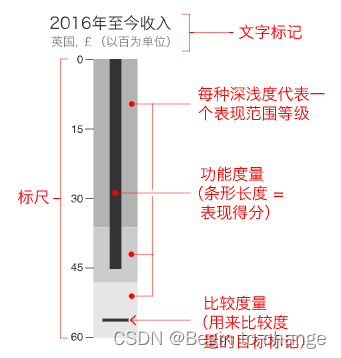
Twelve 、 Candlestick Charts
also called 「 Japan K Line graph 」, Usually used to display and analyze Securities 、 Derivatives 、 Foreign currency 、 Stocks 、 The price of commodities such as bonds changes over time .
The candle chart shows a variety of price information by using the symbol of candlestick , For example, the opening price 、 Closing price 、 The highest price and the lowest price , Each represents a single period of time ( Every minute 、 Every hour 、 Every day or every month ) Trading activities of . Each Candlestick symbol follows X The time scale on the axis draws , Show trading activity over time .
however , The candle chart can only show the relationship between the opening price and the closing price , It's not what happened between the two , So it can't be used to explain why trading is volatile .
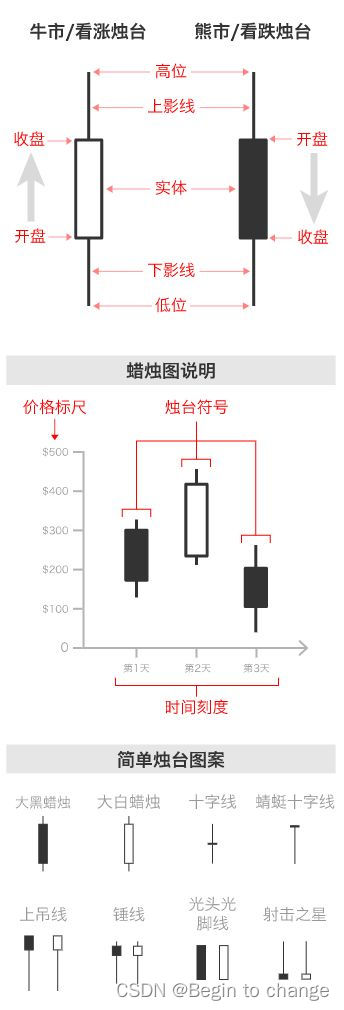
13、 ... and 、 Span chart
Also known as 「 Range bar / Bar charts 」 or 「 Floating bar chart 」, Used to show the range between the minimum and maximum values in a dataset , It's good for comparing ranges , Especially the classified range .
Span charts focus on extreme values , No value between minimum and maximum is provided 、 Other information such as overall average or data distribution .
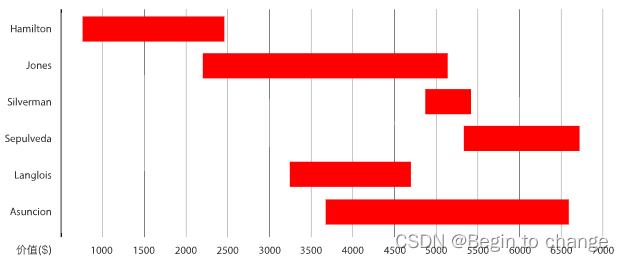
fourteen 、 Kajitu
Kajitu (Kagi Chart) It can show the price performance through a series of line segments , It then shows the general level of supply and demand for specific assets . Because it has nothing to do with time , It can show more clearly the important price trend .
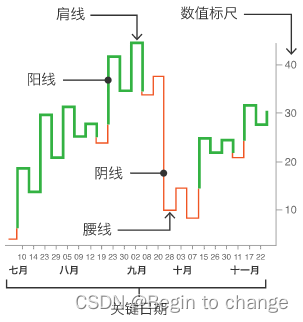
15、 ... and 、 American line
American line (Open-high-low-close Charts) Also known as 「OHLC chart 」 or 「 Price chart 」, Usually used as a trading tool , Display and analyze Securities 、 currency 、 Stocks 、 The price changes of commodities such as bonds over time .
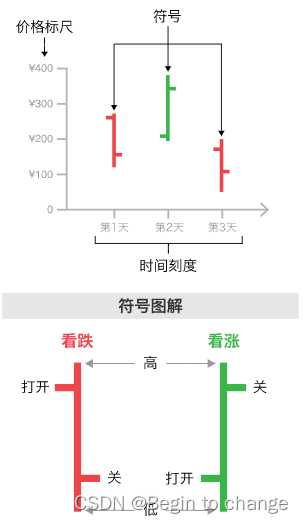
sixteen 、 Dazzling picture
Chords (Chord Diagram) It can show the relationship between different entities and some things in common that they share with each other , Therefore, this kind of chart is very suitable for comparing the similarity between data sets or different data groups .
Nodes are distributed around the circumference , The points are connected with each other by arc or Bezier curve to show the relationship between them , And then assign values to each connection by the size ratio of each arc . Besides , You can also use color to divide data into different categories , It helps to compare and distinguish .
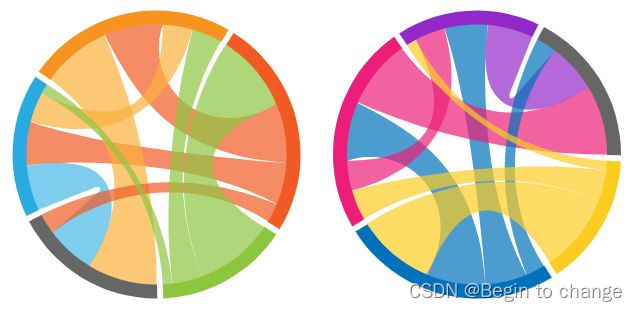
seventeen 、 Non ribbon dazzling pictures
Non ribbon string (Non-ribbon Chord Diagram) It's a simplified version of the chord diagram , Show only nodes and connectors , More emphasis on the connection between data
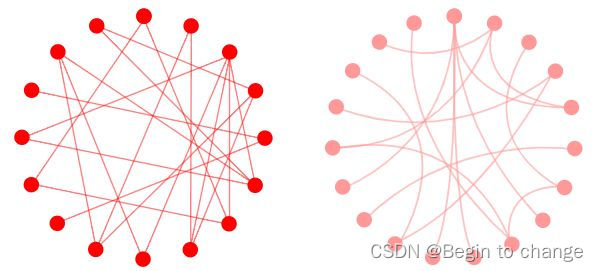
eighteen 、 Tree diagram
Tree diagram (Tree Diagram) Also known as 「 Organization chart 」 or 「 Link diagram 」, It's a way of representing hierarchies through a tree structure .
It's usually structured by no superior / The parent member's element begins ( The root node ), And then add nodes , And then they're wired together , It's called a branch , Represents relationships and connections between members . Finally, the node of branches and leaves ( Or end nodes ), Is a member without child nodes .
Tree diagrams are often used to represent family relationships and lineages 、 taxonomy 、 Evolutionary science 、 Computer science and mathematics, etc , It is also a management tool for enterprises and organizations
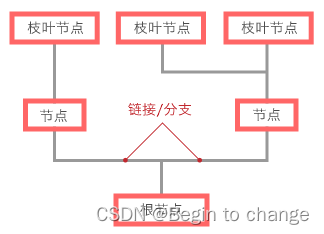
nineteen 、 flow chart
flow chart (Flow Chart) Use a series of interconnected symbols to draw the whole process , To explain complexity and / Or abstract process 、 System 、 How concepts or algorithms work .
Different symbols represent different meanings , Each has its own specific shape . The flowchart represents the beginning and end of a process with curved rectangles ; Line segments or arrows are used to show the direction or flow from one step to another ; Simple instructions or actions are represented by rectangles , And when decisions need to be made , Use diamond shape ...
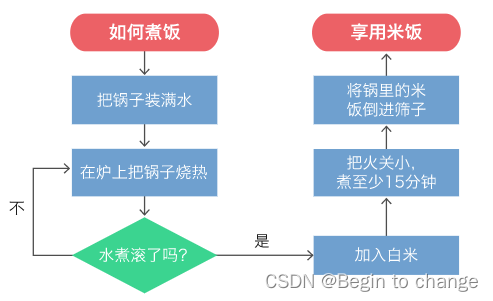
twenty 、 Brainstorming chart
Brainstorming is also known as 「 Mind map 」, You can put related ideas 、 word 、 Images and concepts come together .
Brainstorming maps are often used early in a project , To generate ideas 、 Find associations 、 Categorizing ideas 、 Organizational information 、 Show structure and general learning .

The 21st 、 Notation charts
Notation charts (Tally Chart) It's a recording tool , It is also possible to display the frequency of data distribution by using a marker numeral system .
When drawing a notation chart , Put the categories 、 Values or intervals placed on the same axis or column ( Usually it is Y Axis or left first column ) On . Whenever a value appears , Add a notation to the corresponding column or row .
After all the data has been collected , Add up all the tags and write the total in the next column or line , The end result is similar to a histogram .
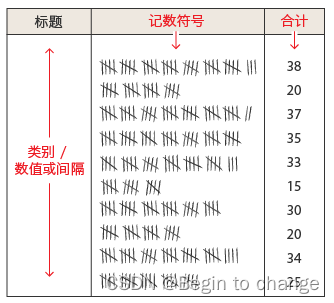
Twenty-two 、 Calendar chart
Human beings have developed various calendar systems as organizing tools , Help us plan ahead . We also use calendars as visualization tools , It is suitable for displaying the organization of activity events in different time periods .
The most common form of calendar we use today is the Gregorian calendar , Each month's calendar consists of seven vertical columns ( Seven days a week ), Another five to six lines represent the week in a horizontal manner .
But , The format of the calendar is not strictly defined , So there are all kinds of different designs on the market , As long as the date or time unit can be displayed in chronological order .
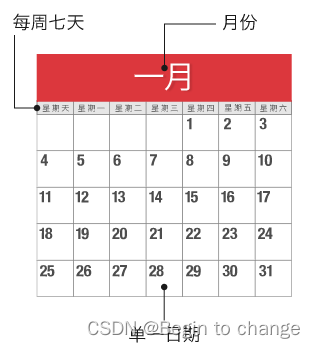
23 、 Timeline
Timeline (Timeline) It's a graphical way of showing a series of events in chronological order , The main function is to convey time related information , Used to analyze or present historical stories .
If it is a scaled timeline , We can do this by looking at the time intervals between different events , Know when the event happened or when it will happen , Find out if the events in the time period follow any pattern , Or how events are distributed over that period of time .
Sometimes the timeline is combined with the chart , Show quantitative data over time .
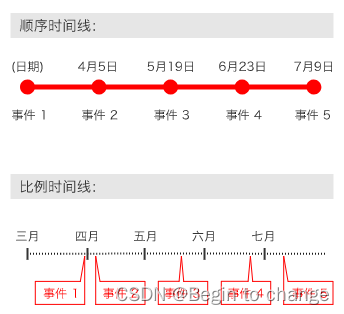
Twenty-four 、 schedule
schedule (Timetable) It can be used as a scheduled event 、 Reference and management tools for tasks and actions .
Use tables in chronological order and / Or organize data in alphabetical order , It can help users to reference quickly .
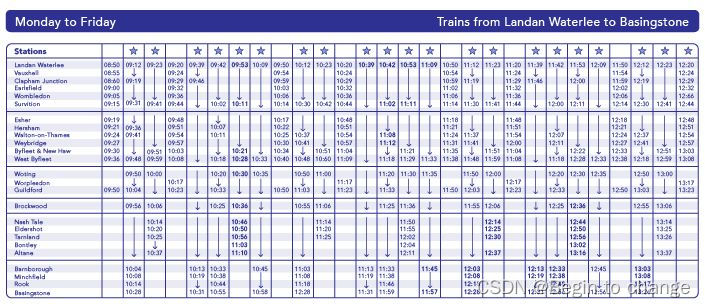
twenty-five 、 Pictogram
Illustrations are designed to use notes 、 Label and legend to explain the displayed image , In order to explain the concept or method 、 Describe an object or place 、 Show how things work or help you understand the themes displayed .
The images used can be symbolic 、 Images or real photos .

hexacosa- 、 Stem and leaf
Stem and leaf (Stem & Leaf Plots) Also known as 「 Branches and leaves 」, It's a bit by bit (place value) How to organize data , Can be used to display data distribution .
The number of constant digits is from small to large 、 Top down in the middle 「 stem 」( Usually in units of ten ), The data within each digit will become 「 leaf 」 And extend horizontally .
In addition to providing fast data distribution information to readers , The stem leaf diagram can also be used to highlight outliers and find patterns . If you have two datasets , Back to back or dual stem leaf charts can be used to compare the two .
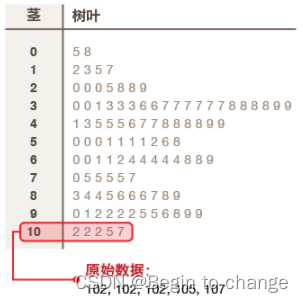
twenty-seven 、 Venn's chart
Venn's chart (Venn Diagram) Also known as 「 Set graph 」, Show all possible logical relationships between sets , Each set is usually represented by a circle .
Each set is a set of objects or data that have something in common , When multiple circles ( Set ) When they overlap , It's called intersection (intersection), The data in it has all the attributes in the overlap set at the same time .
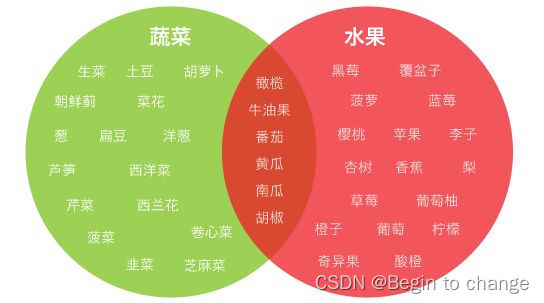
Twenty-eight 、 Violin chart
Violin chart (Violin Plot) Combining the characteristics of box diagram and density map , It is mainly used to display the distribution shape of data .
The black bar in the middle represents the quartile range , The thin black line extending from it represents 95% confidence interval , And the white dot is the median .
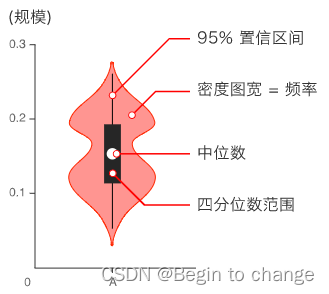
Twenty-nine 、 Word cloud picture
Word cloud picture (Word Cloud) Also known as 「 Tag cloud 」、「 The word cloud 」 etc. , The size of each of these is proportional to its frequency of occurrence , This shows how often different words appear in a given text , Then put all the words together , Form a cloud pattern .
It's usually meaningless to use color on a cloud image , Mainly for the sake of beauty , But we can sort words by color .
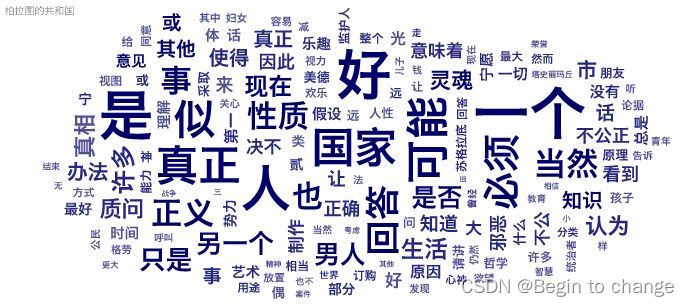
边栏推荐
猜你喜欢
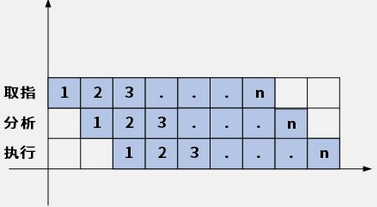
1.14 - 流水线
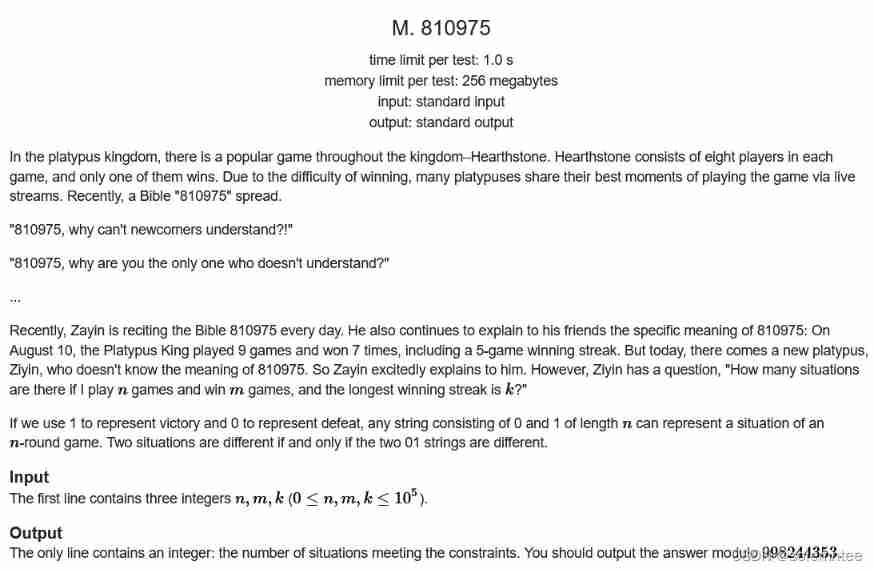
CCPC Weihai 2021m eight hundred and ten thousand nine hundred and seventy-five
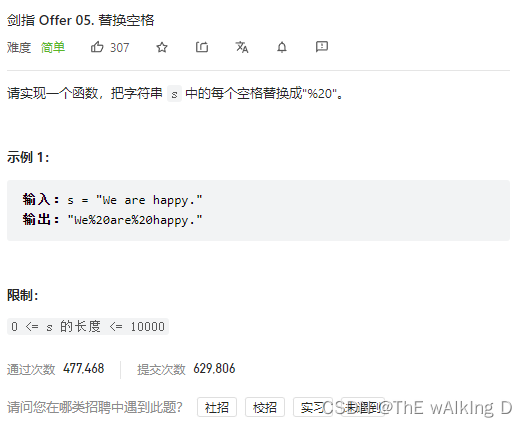
Sword finger offer 05 Replace spaces
![[article de jailhouse] jailhouse hypervisor](/img/f4/4809b236067d3007fa5835bbfe5f48.png)
[article de jailhouse] jailhouse hypervisor

Sword finger offer 58 - ii Rotate string left
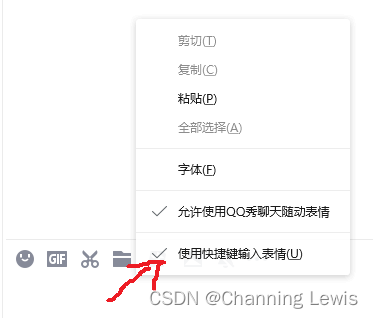
QQ电脑版取消转义符输入表情
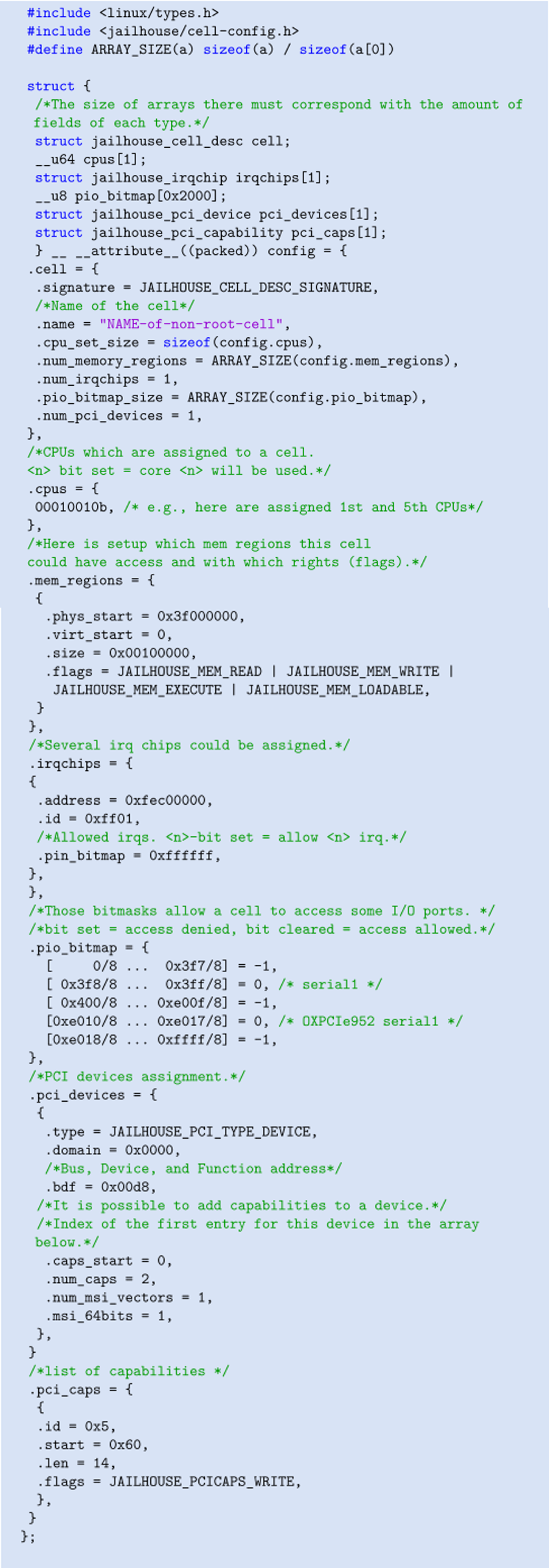
【Jailhouse 文章】Jailhouse Hypervisor
![[practical skills] technical management of managers with non-technical background](/img/4d/1081c71df6ee2087359111baf7498a.png)
[practical skills] technical management of managers with non-technical background
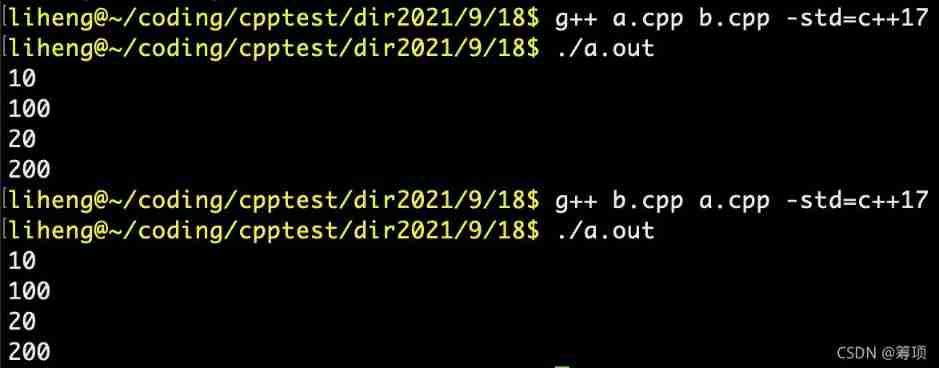
Scope of inline symbol

AtCoder Grand Contest 013 E - Placing Squares
随机推荐
Configuration and startup of kubedm series-02-kubelet
Implement a fixed capacity stack
leetcode-6108:解密消息
全国中职网络安全B模块之国赛题远程代码执行渗透测试 //PHPstudy的后门漏洞分析
Time complexity and space complexity
1040 Longest Symmetric String
Smart construction site "hydropower energy consumption online monitoring system"
The sum of the unique elements of the daily question
【Rust 笔记】15-字符串与文本(上)
剑指 Offer II 058:日程表
QQ电脑版取消转义符输入表情
1039 Course List for Student
Light a light with stm32
redis发布订阅命令行实现
【Jailhouse 文章】Look Mum, no VM Exits
一些工具的记录2022
Typical use cases for knapsacks, queues, and stacks
Little known skills of Task Manager
Transform optimization problems into decision-making problems
One question per day 2047 Number of valid words in the sentence